WordPress Travel Map Plugin (CMMRM) + BuddyPress - Use Case - Building a Community for Trail Routes in BuddyPress Profile
Building a Community for Trail Routes
Note: This guide covers features from:
- WordPress Travel Map plugin - This document uses Pro version 4.5.2
- BuddyPress Integration add-on - This document uses version 1.0.2
Video Use-Case
Introduction
The WordPress Travel Map plugin allows you and your users to create and showcase routes in Google Maps, including images and notes for each location.
The plugin can receive social features by integrating with social platform BuddyPress.
Use Case Front-End
User Dashboard

Use Case Assumptions
In this example we will consider how to let your users add and manage routes from their BuddyPress profiles.
We consider that you have already bought and configured the plugins, but not installed the BuddyPress Integration add-on.
TIP: Still New to WordPress Travel Map Plugin?
This article focuses on the BuddyPress integration. If you haven't already created your site with map routes, check this guide:
It follows:
Installing the Plugin and Add-on
The process is the same for all CM plugins and add-ons.

- Download the plugin from your customer dashboard.
- Log in to WordPress and navigate to the WordPress Admin → Plugins settings.
- Click on Add New.
- Activate it and add the license.
TIP: Automatic Index and Dashboard
Upon installation, the plugin automatically creates a page for the location index and another for the dashboard. Head to Settings → General tab to:
- Find shortcuts to these pages
- Enable or disable them (useful if you want to create your own)

Quick Recap
If you need help with these:
- Perform initial setup (Google Maps API and OpenWeather)
- Adding locations and drawing routes
- Changing visual options
- Configuring user interaction: submit form, who has access, and moderation
- User dashboard
- Custom fields and taxonomies
- Plugin shortcodes
- Translating the plugin interface
Then check the relevant articles:
Initial Setup - BuddyPress
What is BuddyPress?
BuddyPress is a free WordPress plugin that allows you to create a social platform similar to Facebook.
How Do I Install BuddyPress?
BuddyPress can be downloaded from the WordPress back-end.

Once installed, follow their documentation for the initial setup.
Showing Routes on BuddyPress
All the following settings can be found at Admin Dashboard → CM Routes Manager Pro → Settings → BuddyPress tab.

1) User profile: User's Maps Tab
Show "Maps" tab in the user's profile: Yes or No.
If enabled users will see the "Maps" tab in each user's profile that displays the maps created by the specific user.
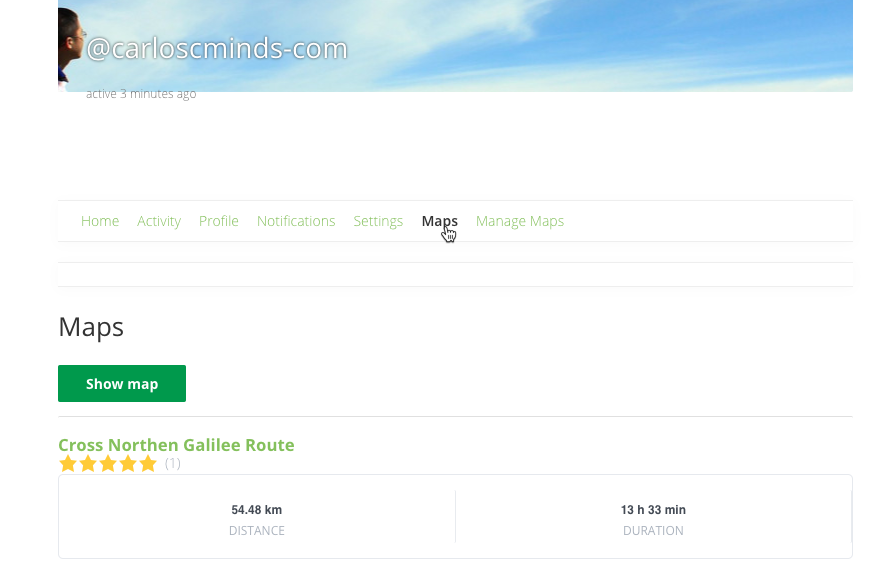
Show routes parameters: Yes or No.
If enabled the routes parameters such as distance, max elevation etc. will be visible on the routes snippets.

Routes snippets layout: List or Tiles.
Choose route snippets layout.

Routes featured image: First Route Image or Map Thumbnail.
Choose what kind of the routes featured image to display in the user's profile page.
Manage routes under "My Maps" tab: Yes or No.
If enabled, the user will see "Manage Maps" tab in his own profile and will be able to manage his routes.
Example
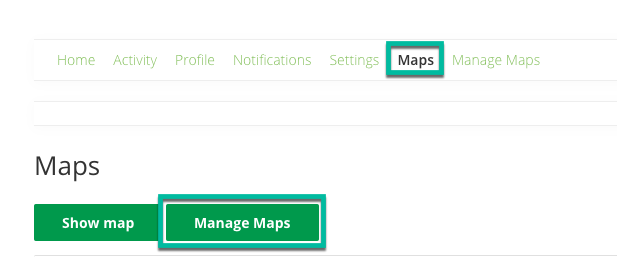
2) User profile: Manage Maps Tab
Show separate "Manage Maps" tab in the user's profile: Yes or No.
If enabled, the user will see "Manage Maps" tab in his own profile and will be able to manage his routes.
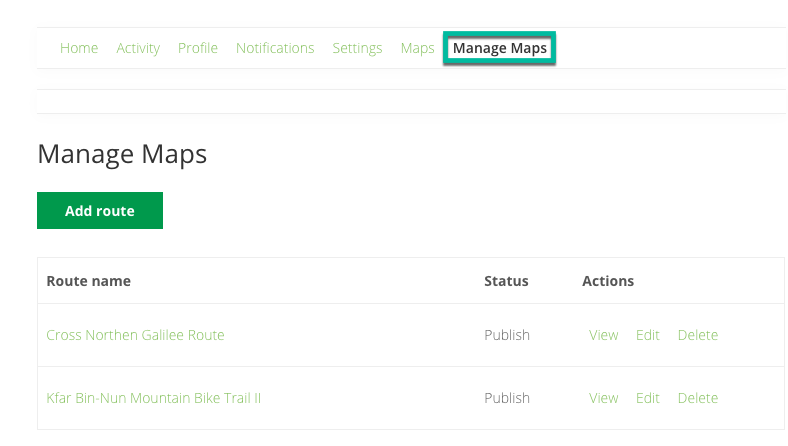
3) Activity Feed
Create BuddyPress activity when a user created a map: Yes or No.
Choose Yes, if you want the add-on to automatically post a new activity when the user adds a new map.

TIP: You Can Use HTML And Placeholders
Example:
<strong>[fullname] - user's display name [title] - routes title [permalink] - permalink to the route page [excerpt] - excerpt of the routes description</strong>
4) Groups
It's possible to associate BuddyPress groups with routes.
The settings are:
- Associate group with route - Enable or disable this feature.
- Group privacy - Define who will have access.
Requirement
Note that the group features require the User Groups component to be enabled. This can be configured in Admin Dashboard → Settings → BuddyPress, as shown below:
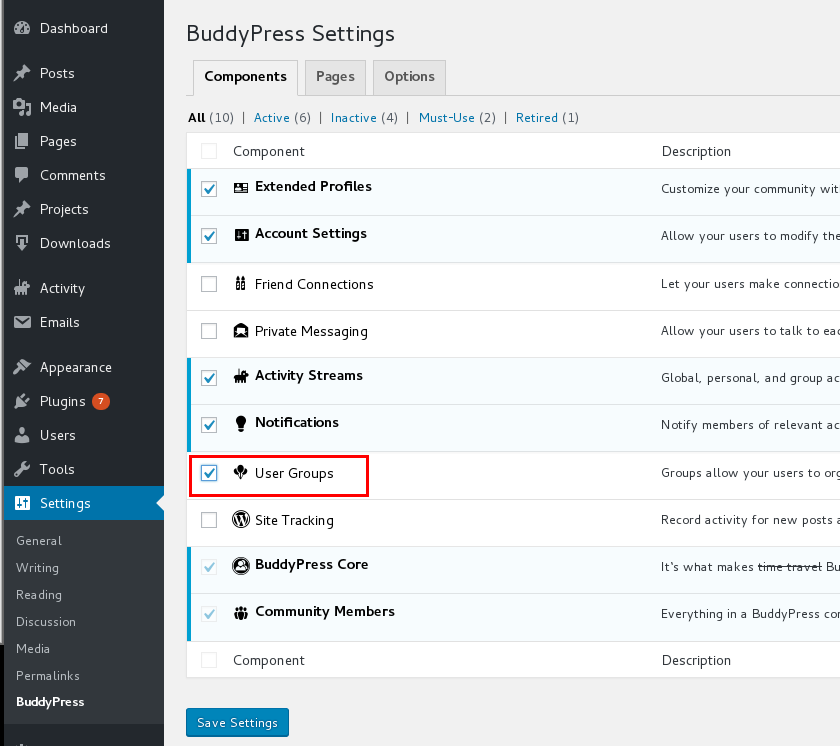
If the settings are proper, you will be able to set the groups when editing the route.
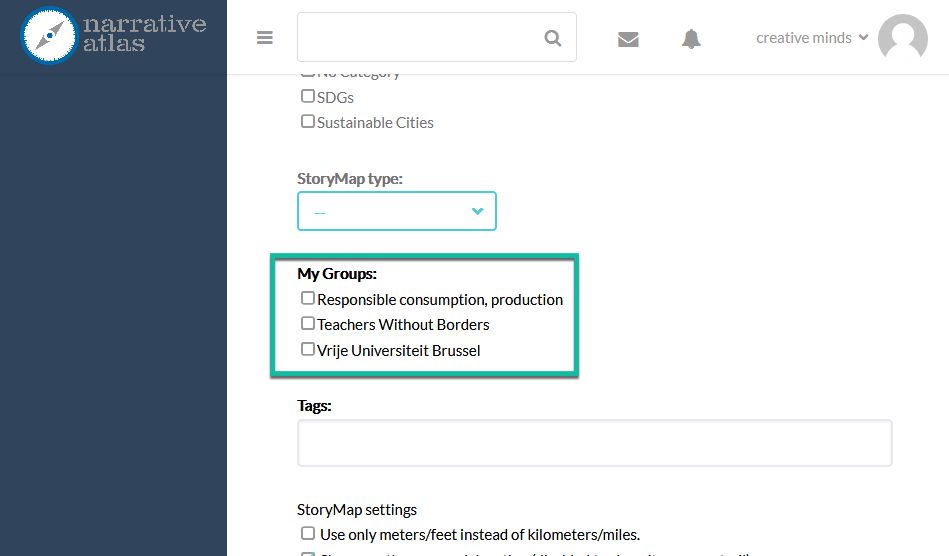
End Result
Following instructions found in the plugin and guides, you and your users should be able to add multiple routes to your site from the BuddyPress profile.
Use Case Front-End
User Dashboard

 |
More information about the WordPress Travel Map Plugin Other WordPress products can be found at CreativeMinds WordPress Store |
 |
Let us know how we can Improve this Product Documentation Page To open a Support Ticket visit our support center |
